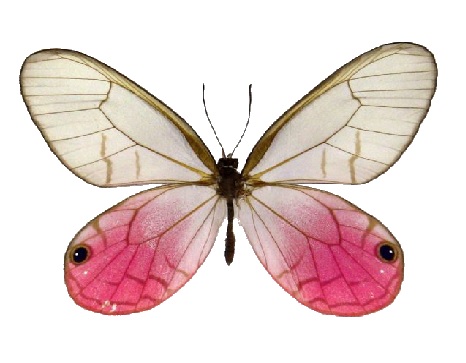Planck E PressCenter Articles
How Do We Become ZerO2Nature?
Date published: 2016-03-01
Date modified: 2022-08-01
Reading time: 00:03:01

“No pessimist ever discovered the secrets of the stars, or sailed to an uncharted land, or opened a new heaven to the horizon of the spirit.”
Helen Keller
To answer this question we will have to defy some paradigms, starting with engineering itself. Classical engineering is linear, Aristotelian logic, dividing the whole into parts and narrowly analyzing each one of them.
Stephen Hawking says that all theories are good until a better one shows up, thereby continuously expanding the possibilities of the comprehension of physics. So, let’s admit that all types of engineering are good until a better one comes along.
Mentioning Stephen Hawking is not an attempt of being vainglorious, and neither is the fact of naming our company Planck-E.
By giving us the concept of quantum mechanics, Max Planck started a revolution in physics. Hence, if Newtonian physics is the mother of classical engineering, holistic engineering is the child of quantum mechanics.
Holistic engineering is essentially the contextualization of interrelationships between patterns. Too complicated? Not really.
Let’s take Nature as an example. Although encompassing countless and intensive productive cycles, Nature does not produce waste. Refuse from one organism is food for another. However, do not be mistaken for nature's production processes also have very high emissions! The Ocean's carbon concentration is in the order of 1 peta-ton (one followed by eighteen zeros). Emissions from radioactive elements in nature are as common as the production of the most powerful poisons. But everything is inserted in balanced cycles. For instance, vipers produce a mortal poison. Nevertheless, they are food for the mongooses, which possess a natural immunity. Life on Earth is an infinite amount of productive cycles with very high negative emissions that are neutralized effectively on almost every occasion. Almost, because when human beings are at the helm of the operation, the result is consistently different.
However, we have made considerable progress over the years. We now have violin chords made out of spiders' silk; we can construct more resistant and beautiful buildings with considerably less material based on the weight distribution of the legs of horses; we study the silica deposition from algae to apply the principle to nanotechnology. Be that as it may, all the previous examples are related to Biomimicry, which is the search for solutions by emulating processes in Nature. After all, what does Holistic Engineering offer beyond Biomimicry?
Holistic Engineering finds inspiration in Nature by observing its processes and trying to adequate them to our production cycles. Nevertheless, the focus of Holistic Engineering doesn't fall on the linearity of productive cycles but on the interrelationships between the phases of each process, contextualizing them continuously and instantaneously.
To handle information from a three-dimensional perspective, we had to go further than the usual available organizational tools, like Pareto, Fishbone, Perth, block diagrams, and so forth. Planck E developed the software CONTEXT-3D, which permits a three-dimensional and instantaneous view of any productive cycle from any desired perspective. The interrelationships between the different parts of the whole can be arranged according to the intended scope.
Ok, but what about ZerO2Nature? When implementing a ZerO2Nature project activity, we do away with three taboos of the increasingly fashionable Green Economy: First, to reduce negative emissions we have to reduce production. Secondly, that green products are necessarily unsophisticated (cheap or ugly), and finally, in order to reduce negative emissions, we have to sacrifice profits. Here, let's take General Electric as an example, with its Ecomagination division, which is making more money today, with its green products, than before the adoption of this new paradigm.
The theory behind ZerO2Nature is that when a productive cycle respects the principle of input-process-output without causing pollution (considering that pollution is everything Nature cannot absorb), a "zero to nature" status has been achieved. Hence, in such a condition, an increase in production would not cause a negative impact on the environment.
Finally, returning to our initial question, how do we reach ZerO2Nature? Through research with Universities, international energy agencies, IPCC, and the UNFCCC, Planck E has created a database with all possible substance emissions that can occur in marine water, potable water, soil, and air. With adequate parameters inserted in our system of equations, based on the location of the productive cycle, we can obtain indices of all the emissions related to a referred cycle, comparing it to either the industry baseline scenario or to the local natural capacity of assimilation. Therefore, the closest the measured impact is from the baseline or capacity of assimilation, the closest the emission impact is ZerO2Nature.
Keywords
- ZerO2Nature
- environmental standard
- biomimicry
- pollution reduction
- GE Ecomagination
For further information about Planck E PressCenter, please contact us.
Divulging ingenious solutions
The mission of the Planck E PressCenter is to promote ideas, products and theories that have not yet reached the mainstream, as captured in our first release Eccentrics and their Ingenious Solutions.
Newsletter
Sign up for our weekly Planck E Newsletter, complete with the latest ingenious solutions.
Click here for the signup form.
Submit your ingenious solution
We encourage you to submit your ingenious solution, article, press release or "out of the mainstream" technical idea for publication on the Planck E PressCenter. Please send us an e-mail to presscenter@planck-e.com and enquire how.
To learn more about holistic engineering, solutions inspired by nature, monetization of diseconomies, training courses or the incorporation of Being Data to your day-to-day, please follow us on the social networks.

